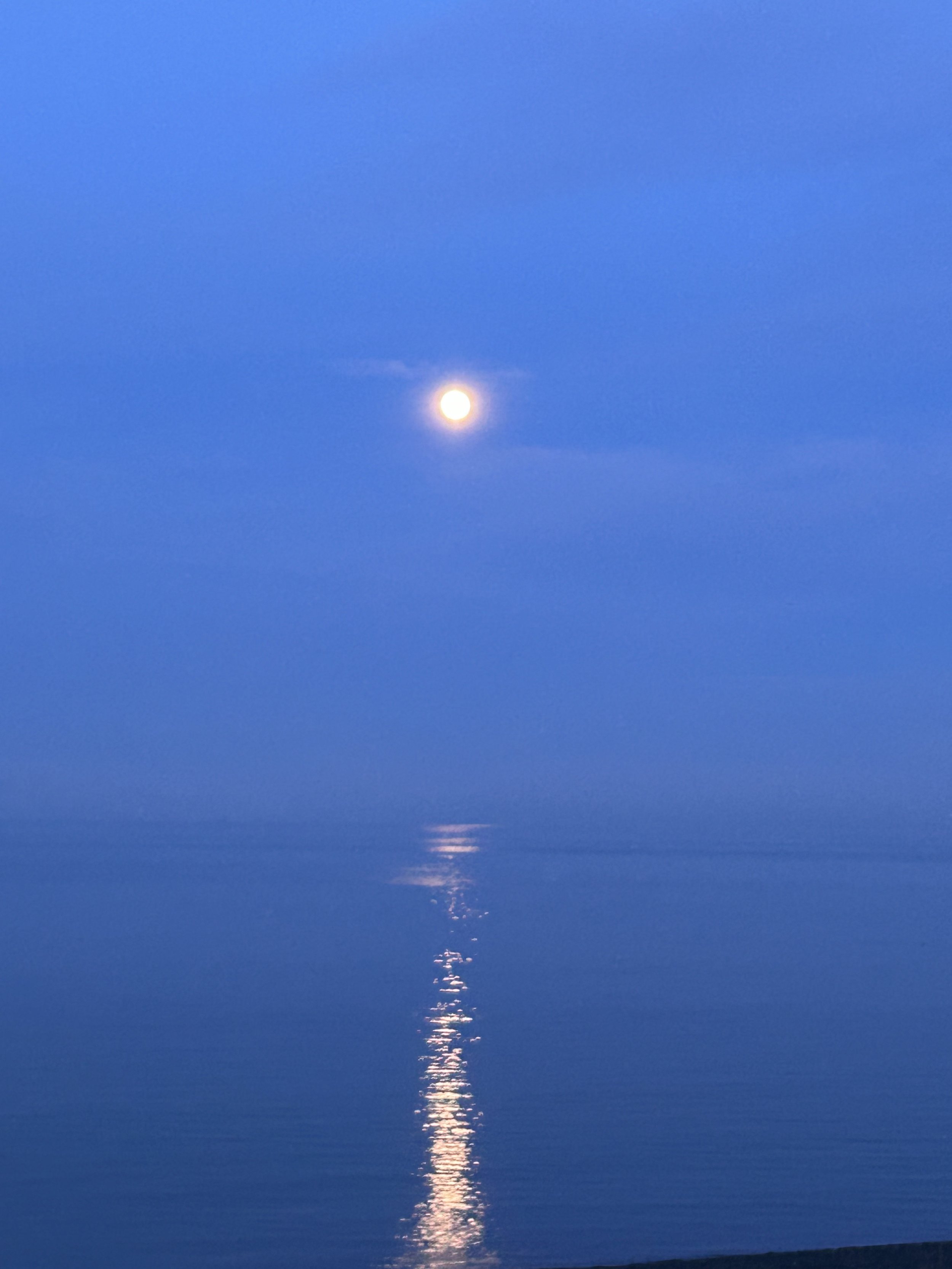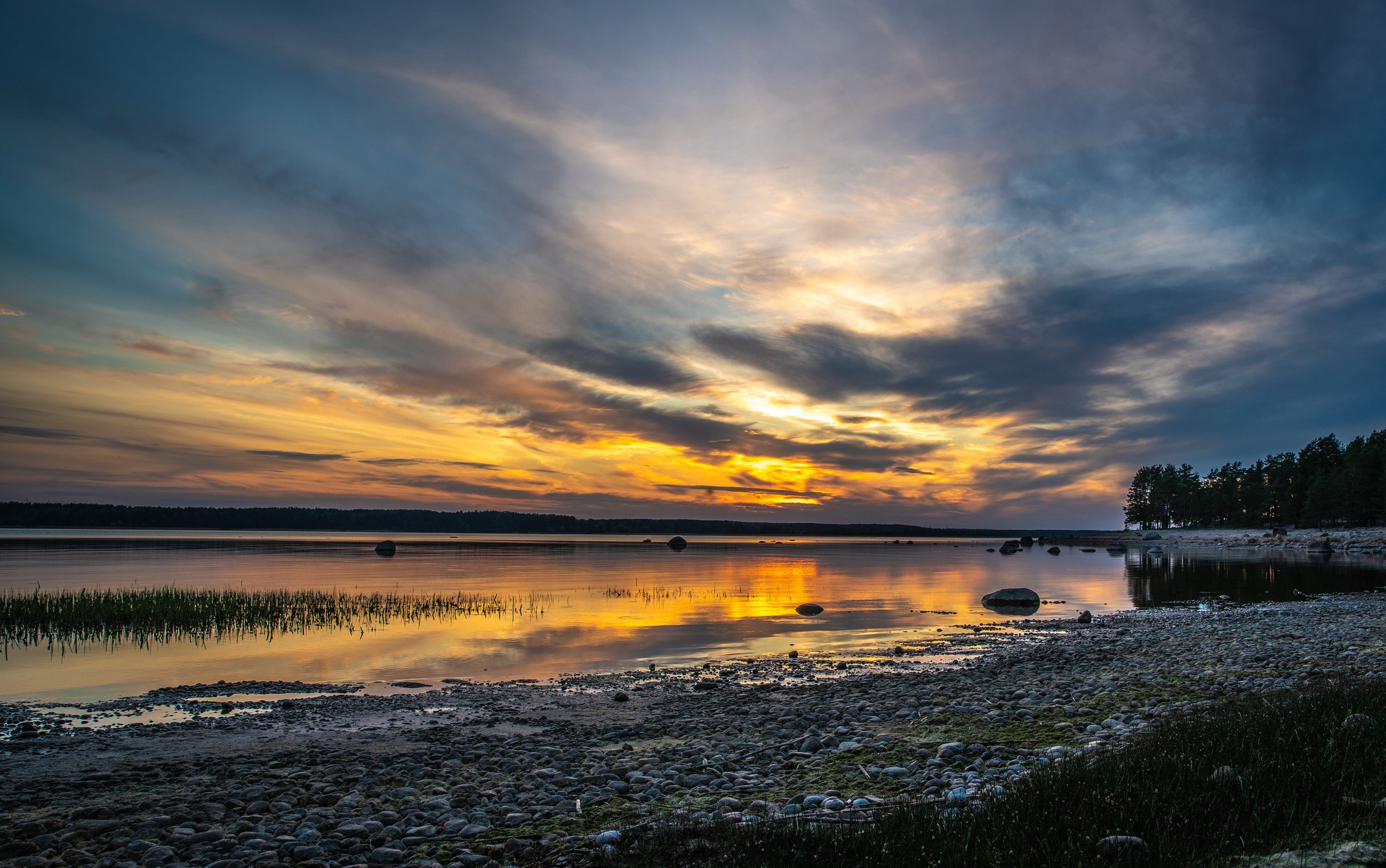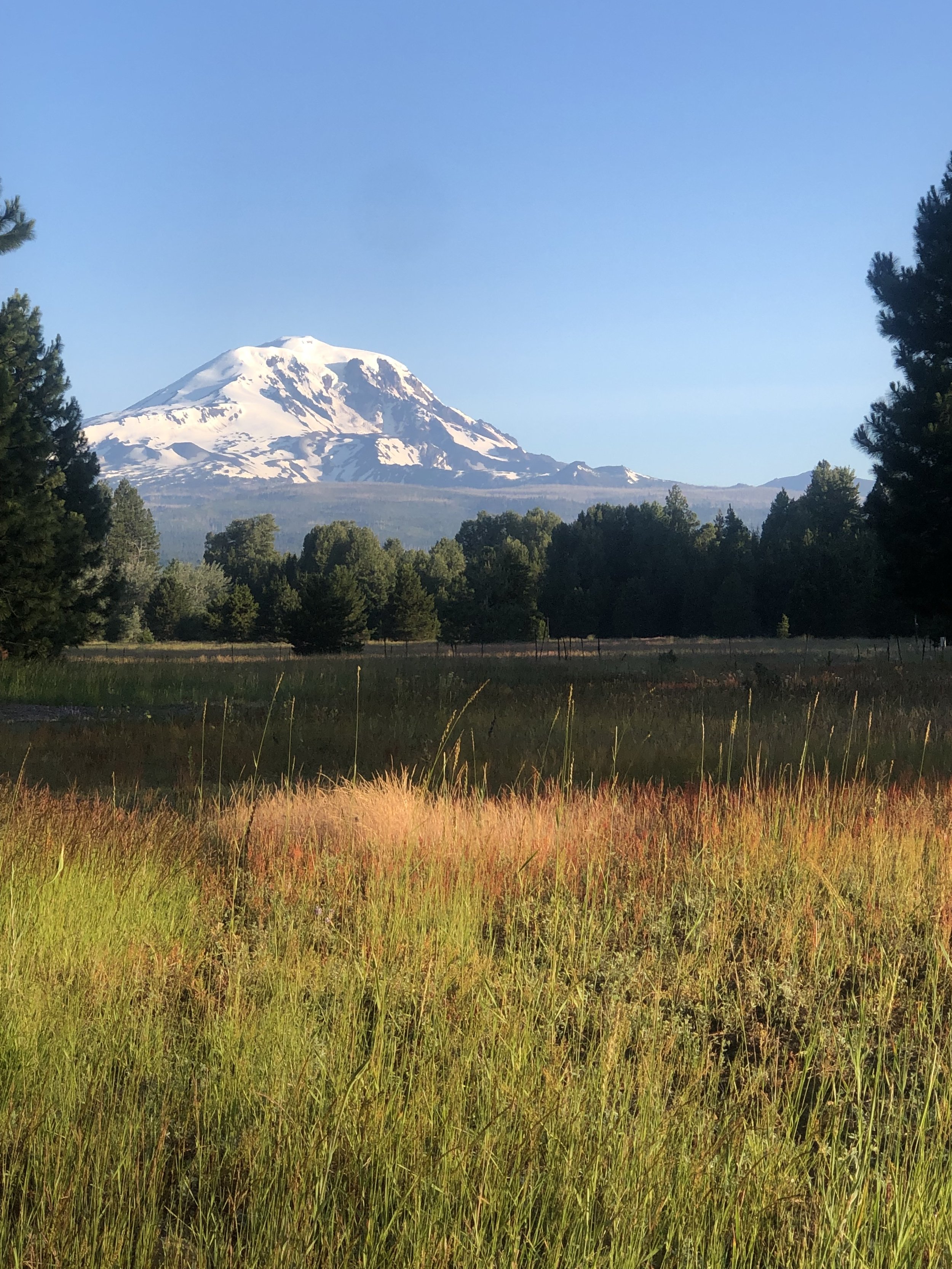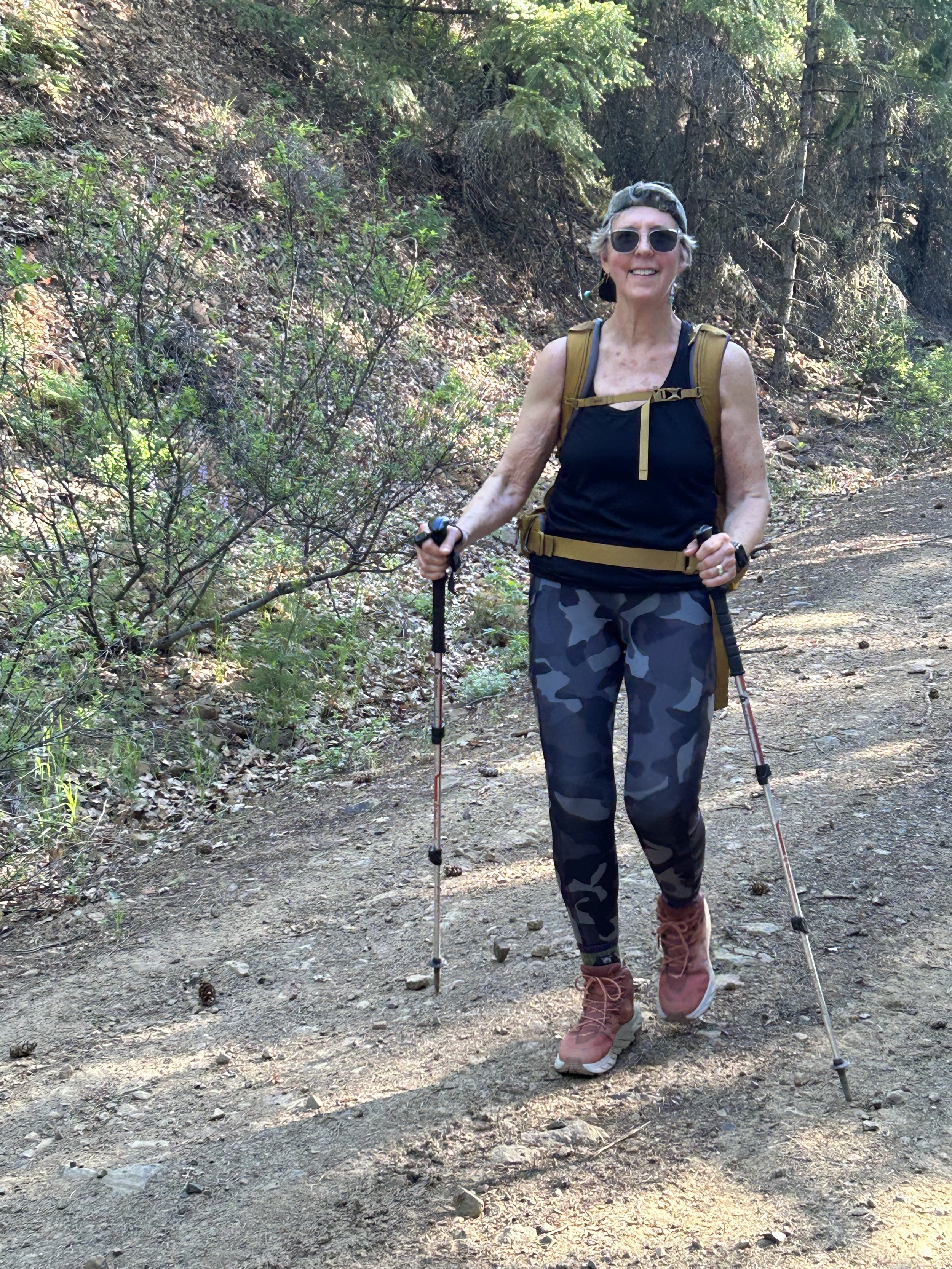The entryway to our home has never been an important space. A space in which I’ve wanted to linger. A space into which I’ve wanted to welcome guests. It’s simply been a space through which to pass, multiple times, as we go about our daily rounds.
I am a person to whom space matters, and yet somehow transforming this small but central space escaped my attention. Until it didn’t.
As with most things, its transformation began with one thing. A photo of the logging road that we have been hiking faithfully ever since the pandemic. It began simply as a way to build our endurance, but over the course of walking that same path, witnessed by those same trees, it has become a kind of pilgrimage. A holy trek upon ground that will faithfully bear whatever we carry, and somehow lighten, and enlighten us in the process. Next came a drawing of Mt. Adams, the mountain in whose shadow we sit, and upon whose slopes we’ve climbed with people we love. Finally, a picture capturing the partnership Tom and I have somehow managed to build, despite our many flaws and foibles, over our thirty years of loving each other. A trip to Pottery Barn for inspiration yielded just the narrow table needed, at a floor model price. Shopping our home resulted in a small lamp to shed soft light, a glass candle holder first purchased for the weddings of a couple of daughters, acorns gathered as symbols of new life to come, a tiny vial of holy oil as we are all in need of healing, and art pieces made by loving hands.
The space was completed on January 19th.
On January 20th, as we headed out to the porch for our morning coffee in the dark, I lit the candle to remind us of the light that will shine in any darkness, no matter how black. In that moment, that transformed space became an altar.
An altar I didn’t know I needed. Until I did.
The altar is now the place upon which to set my prayers. All of them. A space upon which to lay down the burdens of my sadness and grief and pain and fear, leaving them in hands much greater than mine. It is also the space upon which I place my thanks, my faith in the Love that is greater than any evil, and my gratitude for the privilege of being alive. Right now. At this exact moment in our shared history.
All left at the altar, my heart has the space to take in all the beauty, wonder, joy, and love found in the world around and within me.
All left at the altar, I can better encounter the world with a willing heart, an open mind, a ready laugh, the tears that need to be shed, and hands ready to do what is mine to do. To actively work to create a world, and a country, that I want to inhabit.
All left at the altar, I can be present to who and what are before me. To, in the words of Diana Butler Bass, go out and Love relentlessly.
I didn’t know I needed an altar.
Until I did.
Maybe you might need one too.
(Written with gratitude to Katie M for helping me bring the altar into being.)










